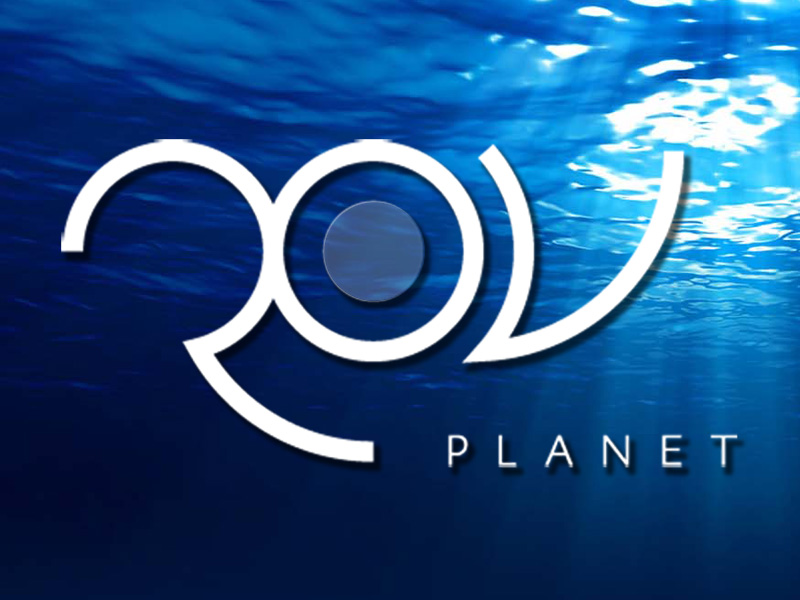
ROV Planet Articles
Articles for Tag or Tags: Search
Number of matching Articles: 145
Wave Glider Mission from Hawaii to Mexico Detects Humpback Whale Calls
03.07.2019
BIG ISLAND, HAWAII July 1, 2019 – Jupiter Research Foundation and Whale Trust are pleased to announce the publication of the results of the first leg of their autonomous Wave Glider HUMPACS (Humpback Pacific Survey) acoustic survey in Journal of the Acoustic Society of America – Express Letters. During a 100-day nearly 7,000 km (3,800 nm) round trip survey on a line between Hawaii and Mexico within the 2018 winter breeding season, humpback whale calls were heard in mid-ocean basin, halfway between the known near-shore assemblies.
Defence and Subsea sectors join forces to accelerate development of underwater autonomous operations to unlock UK competitiveness
19.06.2019
A first of its kind collaboration between defence and oil and gas will lead to the development of advanced underwater technology to solve challenges across both sectors.
Güralp and Sonardyne team up to provide advanced seabed exploration and research technology
06.06.2019
Leading seismic monitoring instrumentation and solutions provider Güralp Systems Ltd. and Sonardyne International Ltd. have signed an agreement to cooperate in the provision of cutting edge multidisciplinary ocean bottom research technology, including capabilities for earthquake or tsunami detection.
JW Fishers' Side Scan Sonar Aides South Dakota Search and Recovery Teams
08.05.2019
JW Fishers Mfg. has been producing Side Scan Sonars (SSS) since 1992, when the first thermal printer SSS was introduced. The original SSS came standard with a 17” thermal printer which allowed the operator to display the ocean floor on thin thermal imaging paper. JW Fishers expanded the technology and moved towards software-driven solutions in the mid-2000’s, allowing customers to discard the heavy paper-based printer in favor of a computer-based graphical user interface. Today, Fishers’ SONAR VIEW software provides the operator with complete control over the system’s operating parameters. Users may choose between 10 different scan ranges and 8 color schemes. With a GPS unit connected, position coordinates are automatically captured with the side scan data. Operators simply hover the computer mouse over a target and the GPS position coordinates are displayed on the screen.
New project to explore deep-seafloor mineral deposits
18.12.2018
A new project has been announced to reduce the potential environmental impact of future mining by making exploration for deep-seafloor mineral deposits much more effective. ‘Project ULTRA’ has been funded by the Natural Environmental Research Council (NERC), and will be led by Professor Bramley Murton at the National Oceanography Centre (NOC).
BHGE partners with AFRC to push limits of advanced manufacturing for oil and gas
10.10.2018
The University of Strathclyde’s Advanced Forming Research Centre (AFRC) and Baker Hughes, a GE company (BHGE), have joined forces to explore how some of the latest advanced manufacturing tools and processes can drive more efficient, smarter ways to reduce cost and increase productivity across BHGE’s operations.
Smart boulders measure fast and powerful seafloor avalanches
08.10.2018
Robotic sensors disguised as boulders, or ‘smart boulders’, have been used to measure the initiation and evolution of huge seafloor avalanches for the first time, revealing some surprising findings that will help inform where best to lay the seafloor cables that keep the internet running.
NSRI to explore wave and tidal opportunities at industry workshop
08.05.2018
In a bid to harness opportunities in the wave and tidal market, The National Subsea Research Initiative (NSRI) is hosting a MasterminingTM workshop in Aberdeen on Wednesday 16 May for subsea supply chain companies.
Sonardyne deep tracking technology selected for German research vessel upgrade
29.01.2018
Ocean science company, Sonardyne International Ltd., has announced that its deep water acoustic tracking technology, Ranger 2, has been installed on one of the most modern vessels in the German research fleet, the Maria S. Merian. The announcement was made at the annual meeting of the Partnership for Observation of the Global Oceans (POGO), which this year is hosted by the Scripps Institution of Oceanography, USA.
Ocean Infinity to continue search for Missing Malaysian Airlines Flight MH370
12.01.2018
Ocean Infinity, the technology company specializing in collecting high resolution geophysical seabed data, confirms that its proposal to continue the search for the missing Malaysian Airlines flight MH370 has been accepted by the Government of Malaysia.
Fugro to bring survey expertise to the search for lost WWI submarine
29.11.2017
Fugro is to join a campaign to find the lost First World War Australian submarine, HMAS AE1.
From its advanced survey vessel, the Fugro Equator, skilled survey personnel from Fugro will use a state-of-the-art multibeam echosounder to conduct a bathymetric survey and a sophisticated autonomous underwater vehicle for close examination of the search area.
JWF Builds Upon a 136 Year Legacy
01.11.2017
Have you ever wondered how the first metal detector was invented? On July 2, 1881, U.S. President James Garfield was shot in the back. While he managed to survive the assassination attempt, a problem arose in that doctors could not locate the bullet. Alexander Graham Bell (then 34 years old) learned of this unfortunate instance and set out to build a device that could detect the bullet lodged in President Garfield’s chest. Although the machine worked properly, Bell deemed it a failure because it was unable to locate the bullet and resulted in the untimely death of President Garfield. What Bell did not know was that the President’s mattress was filled with metal springs that interfered with the magnetic field surrounding the search area. While Bell’s detector didn’t manage to save President Garfield’s life, the technology was a precursor to modern metal detectors. Jack Fisher (1941-2015) expanded upon Bell’s legacy in 1968 by founding JW Fishers’ manufacturing and its complete line of underwater search equipment. Both Bell and Fisher’s legacies live on with daily search and recovery operations across the globe leading to countless lives saved, livelihoods secured, and historical treasures found.
NSRI reveals the challenges and opportunities in wave and tidal energy sectors
10.10.2017
Potential enablers which will assist subsea supply chain companies to break into the growing wave and tidal energy sectors, and associated technological barriers to their progress, have been identified by NSRI (National Subsea Research Initiative).
The findings, part of NSRI’s online Matchmaker database, reveal how UK firms can link up with technology researchers and developers to adapt their offerings and take advantage of the immediate diversification opportunities in marine renewables.
Subsea companies to cash in from NSRI funding event
05.10.2017
Fledging subsea firms will discover how they can overcome common financial challenges through industry supported and government-backed initiatives at an event in Aberdeen on 26th October.
The workshop will explore the wide range of tools and resources available to SMEs, technology developers and innovative companies, providing market expertise, funding, skills and organisational support.
Sonardyne acoustic positioning technology selected for Royal Research Ship Sir David Attenborough
22.08.2017
Ocean science technology company, Sonardyne International Ltd, UK., announced today it has been awarded the contract to supply Britain’s new polar research vessel, RRS Sir David Attenborough, with subsea acoustic tracking and position reference equipment.
The Right Tool for the Job
28.07.2017
Commercial dive companies, law enforcement, Search and Rescue dive teams, and wreck hunters all rely upon a carefully chosen inventory of highly technical equipment to accomplish their goals in a safe, timely, economical and professional manner. Selecting the right tools for the job involves detailed planning and depends entirely upon what an organization is searching for. JW Fishers Mfg. specializes in the manufacture of a diverse line of underwater search equipment to provide operators with a one stop shop for all of their search needs. Over the past 45 years, JWF has worked tirelessly to develop this carefully chosen inventory so that operators can focus on what’s truly important; the mission. Operators of all backgrounds repeatedly return to JWF for assistance in complex searches so that they may have these critical tools for the job, often calling without knowing exactly what they need.
Lifetime Achievement Award for Heriot-Watt University Gas Hydrates Expert
30.06.2017
Professor Bahman Tohidi, Director of the Centre for Gas Hydrate Research and Centre for Flow Assurance Research (C-FAR) at Heriot-Watt, has been given the International Lifetime Achievement Award at the 9th International Conference on Gas Hydrates, in Denver, Colorado.
Major applied geoscience research funding boost for Institute of Petroleum Engineering
16.05.2017
A major funding package for the Institute of Petroleum Engineering (IPE) at Heriot-Watt University will directly support research and training for the future of the industry in UK offshore waters.
Heriot-Watt’s Chief Scientist, Professor John Underhill, has secured funding of £416k from Verus Petroleum, an independent oil company active on the United Kingdom continental Shelf (UKCS).
The award will support a number of oil and gas related training and Applied Geoscience research activities in IPE including the NERC Centre for Doctoral Training (CDT), the Ogilvie-Gordon 3D Audio-Visualisation Centre (OGAVC) and UK Continental Shelf (UKCS) and Frontier Basins PhD research activities.

























